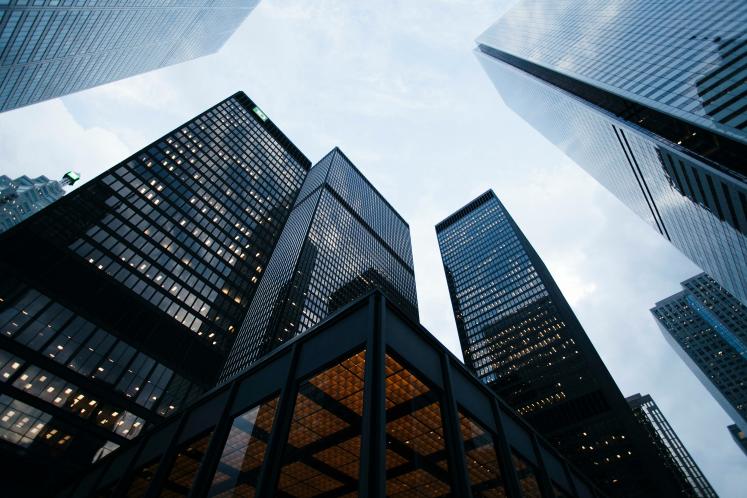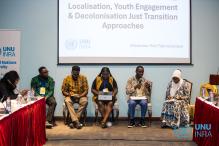In 2015 when the 2030 Agenda for Sustainable Development was adopted, it was clear that public funds and private investment would be needed to achieve the sustainable development goals (SDGs). Since then, although hundreds of billions of dollars have been mobilized in public and private money, additional funds have failed to keep pace with growing needs. The result: an estimated shortfall of $4.2 trillion every year between now and 2030.
With progress towards the SDGs off-track and the world on the verge of a climate catastrophe, development actors – the majority without specialized knowledge of finance – will be desperate to mobilize funds during the years ahead to end poverty and hunger and prevent a climate breakdown.
In this article we ask what do development actors, including United Nations Country Teams (UNCTs) and Resident Coordinators’ (RCs) Offices (RCOs), need to know to unlock new finance? How should they negotiate with and design policies for the private sector to elicit investment in social good? And, how should they think about innovative finance?
Factors That Matter: Risk, Return, and Liquidity
When identifying investment opportunities, private investors typically look for the highest returns, the greatest ease of cashing out (liquidity), and the lowest possible risks. As UNCTs and RCs work to identify bankable projects and generate investments to achieve the SDGs, the risk-return-liquidity profiles of those investments need to match those of competing commercial opportunities. But, there is a problem: not all SDG-related investments can generate revenues – the public benefits they generate cannot, and often should not, be monetized by investors as private returns. Further, many of these investments require long-term commitments (low liquidity), which means they may not be easily converted to cash without potentially incurring a significant loss in value. Given these challenges:
Q1. What would it take to reduce the risk of SDG-compatible investments relative to those of comparable commercial investments? Government guarantees have limitations because guarantees without close oversight often reduce incentives for businesses to manage their risks well, ultimately shifting the burden to taxpayers. Guarantees by multilateral development banks are also based on public funds. What might be other ways to reduce risk?
Pooling risks across people, sectors, and space, as insurers do, is a time-tested way to reduce risks for any one individual or sector. With a rapid increase in climate risks, expanding insurance for a broad range of activities and sectors will be critical. Insurance companies have the skills to assess and monitor risks better than governments, and they discourage high-risk investments like housing in coastal areas. Crowdfunding and social lotteries for SDG projects can divide risk across a large number of small investors to minimize the downside risk for any one of them. Transparent and strong Environmental, Social, and Governance (ESG) standards can reduce risk along supply chains and thus lower the cost of capital for SDG-compliant investments.
Q2. How can one generate or increase private returns from investing in SDGs? SDG-related projects can attract private investments if one expands the scope of returns.
The branding benefits of fair-trade certification, corporate social responsibility, and reputation as a fair employer or sustainable business can translate into financial returns. For instance, Patagonia, an outdoor clothing company, is a highly reputable brand with a massive following because of its support and advocacy for environmental causes. Shifting consumer preferences towards sustainable products and lifestyles can make investments in them more profitable. The reach of social media has made it easier than ever to influence consumer preferences. Further, individuals with high socioeconomic status have disproportionate influence as investors, role models, and advocates on climate action and the development community needs to engage with them to advance the SDGs beyond just financing them.
In some cases, private benefits of public goods can be leveraged to pay for SDGs. For instance, while factory owners might not profit from reducing pollution from their factories, health insurance companies could see savings on payments in areas with low pollution due to reduced cases of cardiovascular and respiratory illnesses. What if health insurance companies were given a seat at the table for discussions on environmental policy?
Taxes and subsidies impact commercial investments directly and indirectly. For instance, the impact of taxes on junk food with matching subsidies for fruits and vegetables is well-documented, and $7 trillion in fossil fuels subsides has kept the sector viable globally despite the falling production cost of renewable energy.
Q3. How can investments in social good be made more liquid? Effective financial markets can allow both debt and equity to be bought and sold at ‘fair’ prices, thus increasing the liquidity of investments. However, in developing countries, the absence of robust financial markets significantly adds to the cost of capital. Liquidity guarantees, and fractional ownership of instruments, can allow investors to cash out before their investments mature.
Asking and answering some of these questions can drive innovations to improve the risk-return-liquidity profiles of SDG-compatible investments. Using this basic framework, RCOs and UNCTs can have conversations with the private sector that go beyond corporate social responsibility and one-off projects, to conversations on the legal and regulatory changes needed to support systematic investment in SDGs. RCs can convene insurance companies, regulators, international financial institutions, and other stakeholders to strengthen ESG guidelines. UNCTS and governments together can explore the limits and potential of crowdfunding for SDGs, and model green consumption. Achieving the SDGs by 2030 calls for systemic changes to financing pathways rather than incremental ones – going back to the basics might place us on more solid ground to affect those changes.
Acknowledgements: This blog post was written as part of Subhra Bhattacharjee’s work as a UNU CPR Global Futures Fellow, a programme for future-oriented thought leadership inside the UN system, led by Head of Anticipatory Action and Innovation Eleonore Fournier-Tombs. The author gratefully acknowledges guidance from Khaled El Mekwad and comments from Carmen Arguello, Ece Berkyurek, Simon Hacker and Mao Kawada.
Suggested citation: Subhra Bhattacharjee., "Private Finance for Social Good," UNU-CPR (blog), 2024-04-17, 2024, https://unu.edu/cpr/blog-post/private-finance-social-good.




